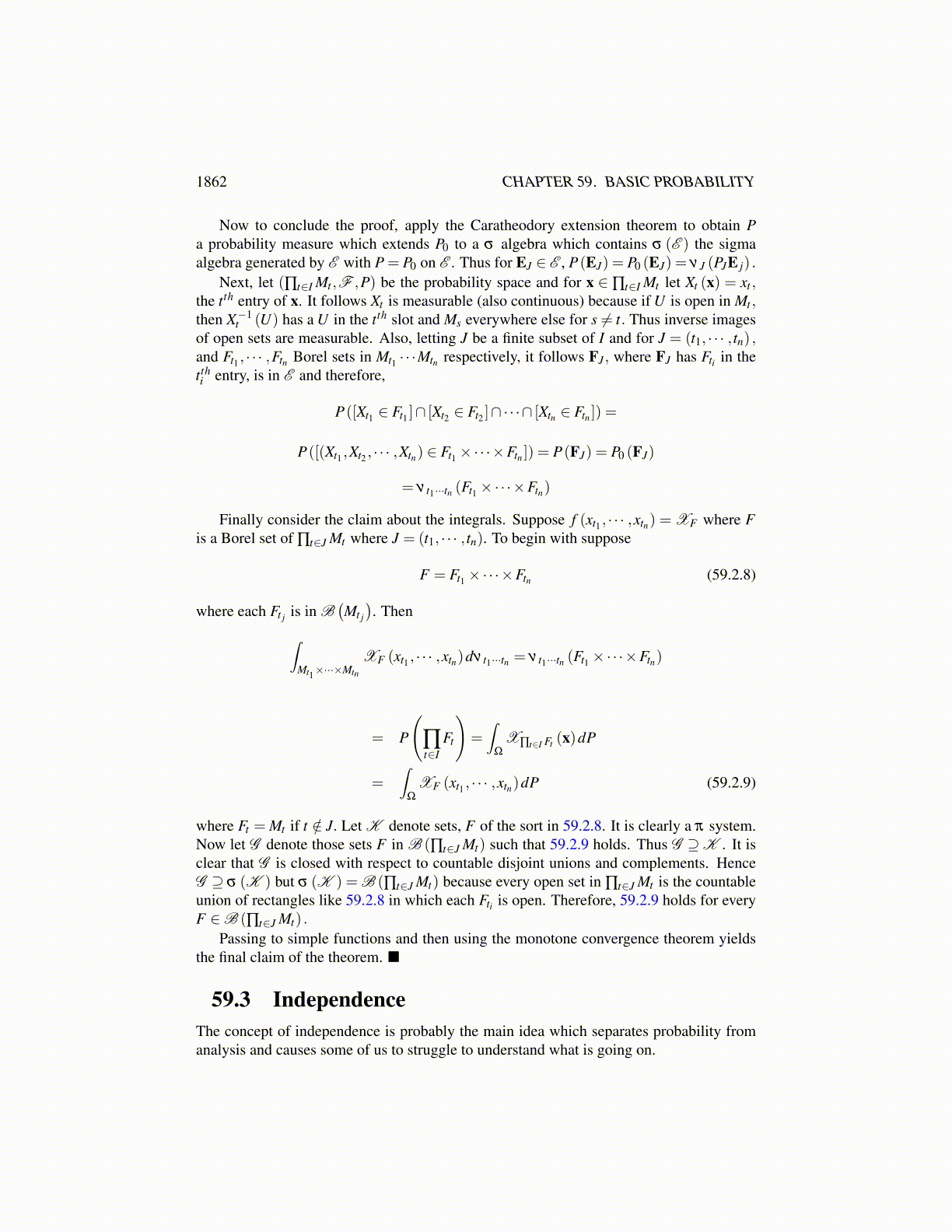
1862 CHAPTER 59. BASIC PROBABILITY
With this preparation, here is the Kolmogorov extension theorem. In the statement andproof of the theorem, Fi,Gi, and Ei will denote Borel sets. Any list of indices from I willalways be assumed to be taken in order. Thus, if J ⊆ I and J = (t1, · · · , tn) , it will alwaysbe assumed t1 < t2 < · · ·< tn.
Theorem 59.2.3 For each finite set
J = (t1, · · · , tn)⊆ I,
suppose there exists a Borel probability measure, νJ = ν t1···tn defined on the Borel sets of∏t∈J Mt such that the following consistency condition holds. If
(t1, · · · , tn)⊆ (s1, · · · ,sp) ,
thenν t1···tn (Ft1 ×·· ·×Ftn) = νs1···sp
(Gs1 ×·· ·×Gsp
)(59.2.5)
where if si = t j, then Gsi = Ft j and if si is not equal to any of the indices, tk, then Gsi = Msi .Then for E defined in Definition 59.2.1, there exists a probability measure, P and a σ
algebra F = σ (E ) such that (∏t∈I
Mt ,P,F
)is a probability space. Also there exist measurable functions, Xs : ∏t∈I Mt →Ms defined as
Xsx≡ xs
for each s ∈ I such that for each (t1 · · · tn)⊆ I,
ν t1···tn (Ft1 ×·· ·×Ftn) = P([Xt1 ∈ Ft1 ]∩·· ·∩ [Xtn ∈ Ftn ])
= P
((Xt1 , · · · ,Xtn) ∈
n
∏j=1
Ft j
)= P
(∏t∈I
Ft
)(59.2.6)
where Ft = Mt for every t /∈ {t1 · · · tn} and Fti is a Borel set. Also if f is a nonnegative
function of finitely many variables, xt1 , · · · ,xtn , measurable with respect to B(
∏nj=1 Mt j
),
then f is also measurable with respect to F and∫Mt1×···×Mtn
f (xt1 , · · · ,xtn)dν t1···tn
=∫
∏t∈I Mt
f (xt1 , · · · ,xtn)dP (59.2.7)
Proof: Let E be the algebra of sets defined in Definition 14.4.1. I want to define ameasure on E . For F ∈ E , there exists J such that F is the finite disjoint unions of sets ofRJ . Define
P0 (F)≡ νJ (πJ (F))